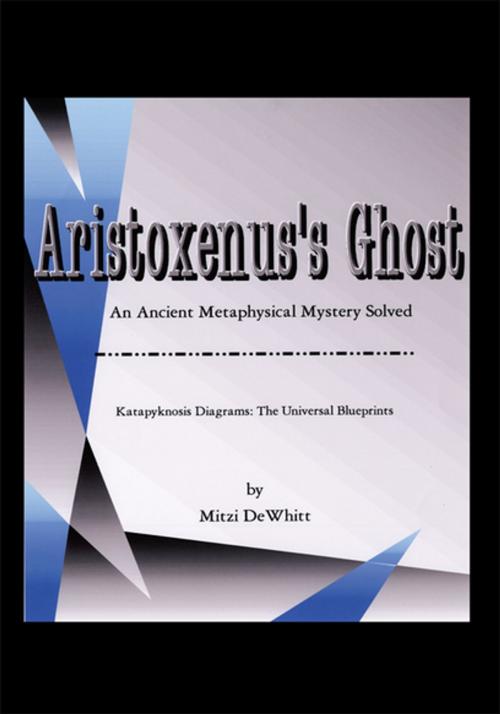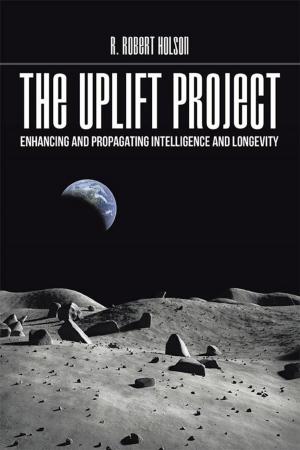Aristoxenus's Ghost
An Ancient Metaphysical Mystery Solved
Nonfiction, Religion & Spirituality, Philosophy, Metaphysics| Author: | Mitzi DeWhitt | ISBN: | 9781465332059 |
| Publisher: | Xlibris US | Publication: | September 7, 2004 |
| Imprint: | Xlibris US | Language: | English |
| Author: | Mitzi DeWhitt |
| ISBN: | 9781465332059 |
| Publisher: | Xlibris US |
| Publication: | September 7, 2004 |
| Imprint: | Xlibris US |
| Language: | English |
As Vyasa, scribe of the epic Mahabarata, said, This book is about you. At first glance the material may seem to be about the specter of ancient Greek musical theory, the ghostly remains that concern a musical system long past and forgotten. However, first glances are often very deceiving. What is offered within its pages goes far beyond arid musical theorizing. As the reader soon begins to discover, permeating through-and-through, in every word on every page, is the archetypal portrait of the ever-present Self. The original and revelatory information, overflowing with meaning, emerges into the world-at-large not only from the extensive research that comes from books and libraries and institutions of higher learning, but also from the deep, quiet, inner searching for the soul. The ideas are unquestionably rich in the nutrients that feed the mind, while also nourishing the heart. Assimilating their message cannot help but inform and transform the reader. Utilizing simple but irrefutable musical mathematics, the author deftly erases centuries-long misunderstandings and speculations by bringing to light what has been lost for twenty-five hundred years: the enharmonic genus. Her point of departure is the Greek musician, Aristoxenus [c. 360 B. C.], a pupil of the philosopher Aristotle. Aristoxenus, the son of a musician, penned a seven-part treatise about music, called Elementa Harmonica. Harmonics was the science concerned with the laws of world creation and world maintenance: how they came into existence and how they were organized. Harmonics revealed the fundamental blueprint of creation, and subsequent theoretical structures. The Elementa Harmonica is considered the oldest theory text still in existence. Its influence was considerable and its theoretical ideas were passed on as doctrine by musical theorist of antiquity. Even so, much of what Aristoxenus wrote in Elementa Harmonica has been lost. Of its last three sections (Modes, Modulation, and Construction) very little remains, while the first four categories (Genera, Intervals, Notes, and Systems) continue to be the basis for heated controversy and endless confusion among scholars. The perplexities are immediately cleared up by the recovery of the enharmonic genus. Suddenly, with discovery of the long lost key, we are able to read the basic blueprint, or matrix, that reveals the universal laws. What today we call the matrix, the ancient Greeks named the katapyknosis. From the shifts within the matrix structure comes the organization of the ancient Harmonia, a word that means soul. Harmonics is really about the soul: of what it is composed, and how it is made. Being the reconciling factor, the soul integrates the inner and outer octaves, enabling the image-formation that is uniquely human. By the measure of the soul one is able to view both the world and oneself objectively. Taking a more intuitive approach than what is permitted in academia, the author describes how Aristoxenuss seven musical categories, beginning with the key of the recovered enharmonic genus, actually reveal the expanded viewpoint of an underlying hermetic tradition, one effectively preserved and transmitted by the very information contained within Elementa Harmonica itself. The bold and innovative interpretations in this work may, in all likelihood, set off a storm of controversy that will go beyond the confines of the academic community. What has been dared is the revivifying of ideas, long considered cold and dead, so they once again vibrate the eternal truths of physical and metaphysical principles. Uniquely original yet universal, crossing the lines of science and religion and philosophy, the information emerges into the world-at-large just in the nick of time, as the world approaches the brink of an abyss that cannot be bridged by the usual attempts at diplo
As Vyasa, scribe of the epic Mahabarata, said, This book is about you. At first glance the material may seem to be about the specter of ancient Greek musical theory, the ghostly remains that concern a musical system long past and forgotten. However, first glances are often very deceiving. What is offered within its pages goes far beyond arid musical theorizing. As the reader soon begins to discover, permeating through-and-through, in every word on every page, is the archetypal portrait of the ever-present Self. The original and revelatory information, overflowing with meaning, emerges into the world-at-large not only from the extensive research that comes from books and libraries and institutions of higher learning, but also from the deep, quiet, inner searching for the soul. The ideas are unquestionably rich in the nutrients that feed the mind, while also nourishing the heart. Assimilating their message cannot help but inform and transform the reader. Utilizing simple but irrefutable musical mathematics, the author deftly erases centuries-long misunderstandings and speculations by bringing to light what has been lost for twenty-five hundred years: the enharmonic genus. Her point of departure is the Greek musician, Aristoxenus [c. 360 B. C.], a pupil of the philosopher Aristotle. Aristoxenus, the son of a musician, penned a seven-part treatise about music, called Elementa Harmonica. Harmonics was the science concerned with the laws of world creation and world maintenance: how they came into existence and how they were organized. Harmonics revealed the fundamental blueprint of creation, and subsequent theoretical structures. The Elementa Harmonica is considered the oldest theory text still in existence. Its influence was considerable and its theoretical ideas were passed on as doctrine by musical theorist of antiquity. Even so, much of what Aristoxenus wrote in Elementa Harmonica has been lost. Of its last three sections (Modes, Modulation, and Construction) very little remains, while the first four categories (Genera, Intervals, Notes, and Systems) continue to be the basis for heated controversy and endless confusion among scholars. The perplexities are immediately cleared up by the recovery of the enharmonic genus. Suddenly, with discovery of the long lost key, we are able to read the basic blueprint, or matrix, that reveals the universal laws. What today we call the matrix, the ancient Greeks named the katapyknosis. From the shifts within the matrix structure comes the organization of the ancient Harmonia, a word that means soul. Harmonics is really about the soul: of what it is composed, and how it is made. Being the reconciling factor, the soul integrates the inner and outer octaves, enabling the image-formation that is uniquely human. By the measure of the soul one is able to view both the world and oneself objectively. Taking a more intuitive approach than what is permitted in academia, the author describes how Aristoxenuss seven musical categories, beginning with the key of the recovered enharmonic genus, actually reveal the expanded viewpoint of an underlying hermetic tradition, one effectively preserved and transmitted by the very information contained within Elementa Harmonica itself. The bold and innovative interpretations in this work may, in all likelihood, set off a storm of controversy that will go beyond the confines of the academic community. What has been dared is the revivifying of ideas, long considered cold and dead, so they once again vibrate the eternal truths of physical and metaphysical principles. Uniquely original yet universal, crossing the lines of science and religion and philosophy, the information emerges into the world-at-large just in the nick of time, as the world approaches the brink of an abyss that cannot be bridged by the usual attempts at diplo















